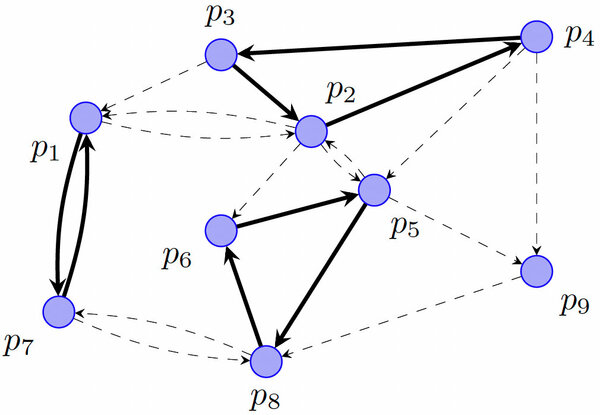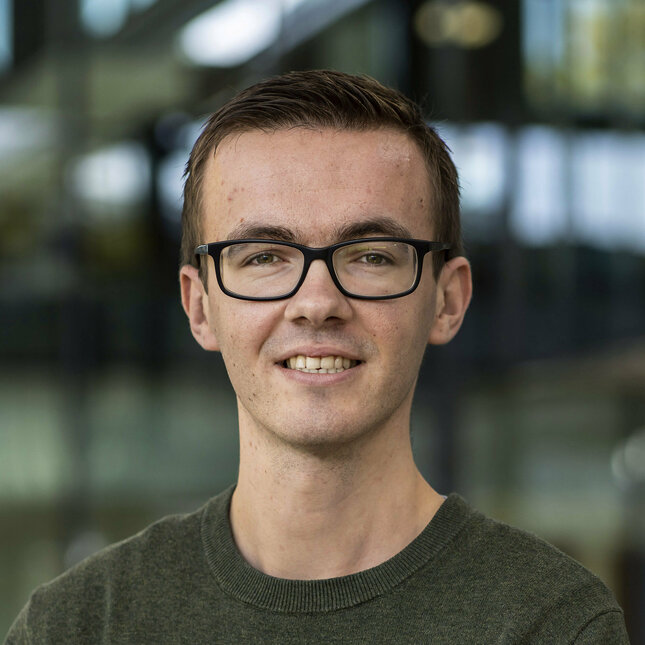Imagine that you are patient in the final stages of renal disease. Your only remedy is to receive a transplantation. Fortunately, your best friend is willing to donate one of their kidneys. However, you have blood group A, whereas your friend has blood group B, hence the two of you are incompatible. This common scenario can be solved in part via kidney exchange or kidney paired donation. For his PhD research, Danny Blom developed several advanced mathematical models to better solve the kidney paired donation problem and demonstrate how it could be implemented in theory. He defended his PhD thesis on December 15th at the Department of Mathematics and Computer Science.
Luckily for many kidney patients dealing with a serious condition that affects the viability and function of the kidneys, there's an innovative method to solve incompatibility issues. "It is known as kidney exchange or kidney paired donation", says Blom, PhD researcher at the Department of Mathematics and Computer Science. "The basic idea behind kidney exchange is that two incompatible pairs A and B can exchange donors if the donor of A is compatible with the patient of B, and vice versa."
In fact, this notion can apply to any number of donor-patient pairs, as long as each patient ends up with a compatible donor. "This way, each donor can indirectly help their intended patient by giving their kidney to another patient", adds Blom.

The logical question
Kidney exchanges are typically arranged through coordinated kidney exchange programs (KEPs).
A logical question to ask is: given a pool of participating incompatible donor-patient pairs in a KEP, how should a set of pairs be identified that can exchange donors for the benefit of as many patients as possible? Blom: "A simple model for kidney exchange programs can be described as a network of compatibilities. For each incompatible pair a node or crossing point in this network can be labelled, and an arrow from node A to node B if the donor of A is compatible with the donor of B."
As can be seen in accompanying illustration, a set of pairs can exchange donors if they form a so-called directed cycle. Each pair in this set has one incoming arrow from a node and one outgoing arrow to a node of some other pair in the set. In this case, there are three exchanges, namely between the two pairs p1 and p7, the three pairs p5, p6 and p8 and the three pairs p2, p3 and p4.
"An intuitive aim would be to maximize the number of transplants in a kidney exchange program, which corresponds with a set of pairwise disjoint directed cycles, as each donor is only able to donate one kidney", says Blom.
This amounts to an optimization problem and leaves out important practical details. So, for his PhD research, Blom studied several more advanced models and their impact on practice of kidney exchange.

Dealing with uncertainty
"First of all, there is a lot of uncertainty with regard to the structure of kidney exchange program networks, as it is impossible to know for sure if a donor and a patient are compatible", notes Blom. Also, unforeseen events can lead to changes to the network. Donors and patients might withdraw from the kidney exchange program, e.g., if either the donor or the patient is too ill to undergo surgery, or if the patient is about to receive a transplant from a better matching donor through an alternative transplantation program.
"This might also happen during the period between identification of potential exchanges and the actual surgeries themselves. In that case, the set of identified exchanges needs to be reconsidered", according to Blom. However, that might leave patients who were supposed to receive a donor kidney empty-handed. Therefore Blom investigated the outcomes of KEPs, in case it could be enforced that exchanges not impacted by such unforeseen events must proceed to transplant. He found that even in a worst-case scenario, the number of transplants that he could guarantee in this setting, was close to when full reconsideration is possible.
Inter-hospital collaboration
Furthermore, kidney exchange programs also involve patients that are difficult to match. "To increase the chances of a transplant for these patients, scaling up kidney exchange programs is of utmost importance", Blom points out. "In recent years, international and inter-hospital collaborations have set up joint kidney exchange programs with the goal of increasing the pool size."
In practice, however, strategic choices come into play which are associated with individual hospital policies on prioritizing their own patients, such as withholding pairs (hiding information) from the collaborators. To account for such eventualities, Blom introduced a new way for joint kidney exchange programs to remove incentives for such strategic choices.
On the one hand, he proved that it is a theoretically hard computational task to optimize strategic choices. On the other hand, he conducted an extensive experimental study that shows his new model leads to consistently larger numbers of transplants compared to some of the currently existing collaborations.
Future implementation
Blom's research purely explored the mathematical perspective of a medical application. "While it would have been great to test my model in the healthcare setting, there are many obstacles such as legal and ethical considerations", he says. "This makes it difficult to change things in healthcare."
Nevertheless, Blom hopes that his work can contribute to change and helps future research used to inform policy makers about the benefits of policy changes. "As the Netherlands plays a special and key role in popularizing kidney exchange in Europe, I believe that the results of my research might give the responsible policy makers some insights in how to design their kidney transplantation programs."
Title of PhD thesis: Multi-Level Optimization Problems for Kidney Exchange.
Supervisors: prof.dr. Frits Spieksma and Bart Smeulders.






